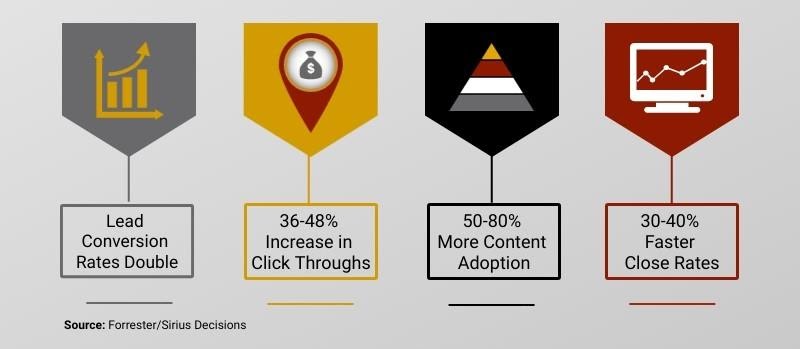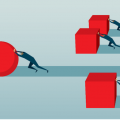Imagine that you’re at a party with a group of acquaintances and the woman standing next to you announces her weekend plans – she’ll be painting her apartment. Which of the following would you be most likely to ask:
A: What color did you choose?
B: How did you choose the color?
C:There are great apartments for rent right now. Have you thought about moving?
Answers vary on this selection (more on that later). But it’s clear that the question needs to follow the woman’s lead, that we would never script our conversation in advance of the social interaction. Imagine the confused, annoyed or bored response from this woman if we asked “so what do you think about that new play that just opened?”
Most people are perplexed when I ask them to conduct unscripted buyer persona interviews. These are the same people who will happily show up in any social situation, listen for threads of topics that others find engaging, and guide the conversation to mutually relevant topics.
Why not take this same approach with buyer interviews?
While it is definitely more taxing to develop questions in real time, the pressure to do so keeps us listening intently. And each time we base a question on a point that the buyer has recently made, our rapport with the other person builds. The buyer might even tell me, a perfect stranger, something he hasn’t told anyone else.
Pre-defined questions can only address topics that we found interesting before we started listening to the buyer. Worse yet, we are unlikely to learn anything new, having missed the opportunity to probe deeply on an interesting point..
This approach is especially critical for win/loss interviews. We need to get buyers talking at length about their decision criteria and process. We aren’t going to discover any actionable insights by writing down the buyer’s short answer — that we lost the deal on price and features, or won it because our sales rep is such a great guy. We need much deeper insights into how and why the company made this decision.
For instance, if the buyer told us that one of the triggers for this decision was that our solution was easiest to use, we might follow up by asking the buyer to describe what, specifically, they found to be easy. Or we might ask what level of user would find it easy to use, and what training they expected that user to need. Another line of questioning might reveal details about how they assessed the solution’s ease-of-use.
Returning to your interaction at the party, if you selected question A (what color will she paint her apartment), you have just learned that your new acquaintance likes light yellow, which might be interesting if you are selecting colors of paint to carry in your store, or what colors to feature in a marketing campaign for paint.
Question B (how did she choose the color?) is a great follow-up question, or likely your best first question, as this should trigger a story about the way this person thinks and makes decisions. This question will probably get you the answer to the color too.
Question C (did you know there are some great apartments for rent?) is changing the subject, a terrible technique when you need to build rapport, and one of the major reasons that interviews should never be scripted.
Unless you’re marketing home improvement products, you shouldn’t care about anyone’s choice of paint – buyer’s decision processes vary dramatically based on the products, services and solutions they’re considering. But we want to have an agenda, perhaps three-to-five topics that we hope to explore, and not a structured questionnaire, if we want buyers to tell us what really persuades them to make decisions about our category of solutions.




